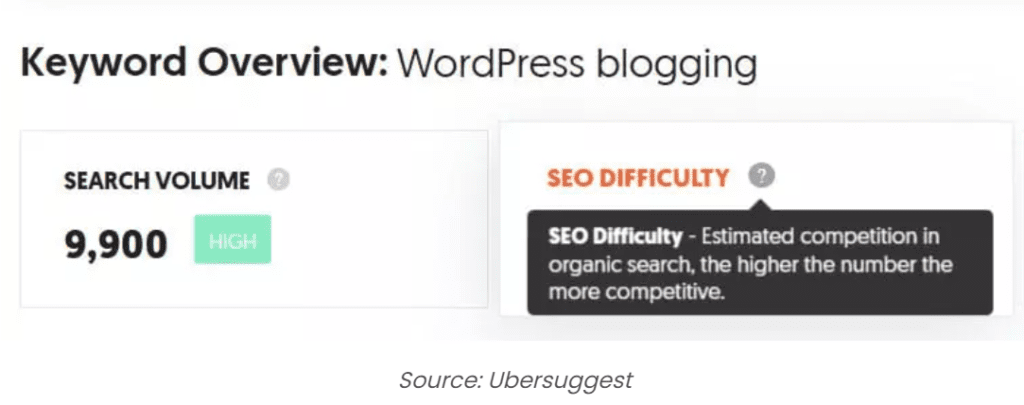How to Do SEO Text Analysis of B2B Marketing Content

When crafting B2B content, we usually want it to communicate brand voice, be informative, and engage the target audience to become our leads. But what about engaging search engines? If we don’t write B2B content according to page ranking principles, Google won’t see and show it to our targets, agree?
Writing our B2B marketing content with SEO in mind, we stimulate its promotion and help it get to the top of SERP.
The question is, how do we know if we’ve created SEO-friendly content? What qualities should it have, and how to check if it’s well-optimized?
In this article, you’ll find practical tips on writing for SEO and learn how to do SEO text analysis of B2B content to understand if it’s good enough to please both people and search engines.
Why Do SEO Analysis of B2B Content
SEO text analysis serves to ensure a copywriter or a B2B content marketer builds texts according to search engines’ quality objectives. As we know, all search engines provide requirements for the content, and they are quite a few:
- uniqueness
- applicability and value
- relevancy
- structure: headings, subheads, paragraphs, lists
- clarity
- readability
- keywords and LSI-words
- no keywords stuffing
- no wordiness and vagueness
- having visual content: images, graphs, videos, infographics, etc.
Each requirement works as a factor for Google to decide if your B2B writing is worth high rankings. The more standards it fits, the more chances it gets to win SERP and become visible to a broader audience. If disregarding the requirements, with more focus on website design or link building instead of content quality, you risk getting penalties.
SEO text analysis will help you see if your B2B marketing content follows all the requirements and avoid its over-optimization, which can hurt your website’s overall position.
How to Write for SEO and Optimize Your B2B Content in 2021
First and foremost, your B2B writing needs to perform two tasks:
- To attract search traffic. (Users see it in SERP, click, and engage with it.) The more traffic you have, the better search engines treat your website. It should be relevant and of high quality for more users to engage with your content and, therefore, influence your global or local ranking factors.
- To meet user search intent and be helpful. When searching for something online, a user wants to find a webpage that would provide a comprehensive answer. If yours is low quality, unstructured, and vague, get ready for SEO metrics downfall: time on page and bounce rate will suffer.
For your B2B content to address these two global challenges, you need to optimize it accordingly.
Start with a search for relevant topics. Consider a semantic core of your B2B website, the one including keywords according to users’ all queries. Cluster the keywords by pages, identifying those with reasonable search volume for every page.
Tools like Ubersuggest or Ahrefs can show you the metrics such as SEO Difficulty or Keyword Difficulty, so feel free to use them for choosing a focus keyword for every page.

Having identified a keyword, brainstorm the corresponding topic ideas for your B2B content. Try Answer the Public, the resource that will give you tons of headline ideas for your content. Exploding Topics or Google Trends are great to use to see if those topics are still trendy.
To make the process easier, consider related keywords for brainstorming topics. Google’s instruments like “People also ask” and “Related searches” can help too.

When writing a B2B text on your chosen topic, remember about the general rules of web writing:
- Use short headlines and subheads.
- Consider short sentences and paragraphs; use bullet points.
- Be clear; use the words your audience knows.
- Include high-quality images and other visual content.
- Share practical tips, answer the questions you’ve specified during the keyword research, ensure your content matches the user search intent.
- Remember about on-page SEO: Write SEO titles and descriptions, develop SEO-friendly URLs, use meta-tags, add a few internal and external links, and mention your target keyword throughout the text.
Such SEO parameters as clarity, readability, and lack of grammar/style errors are easy to check and analyze with numerous writing apps: Grammarly, Readable, ProWritingAid, and others. However, for a more comprehensive SEO text analysis, you’ll also need to check B2B content’s more specific qualities.
Qualities of SEO Text to Check in B2B Writing
1) Uniqueness
Search engines do care about the uniqueness and originality of texts websites publish. They ban duplications, plagiarism, and using the information with no reference to its author. So, the higher the percentage of your text uniqueness, the better. However, there’s a detail to consider:
Not all niches can keep their texts to 100% uniqueness.
For example, field-specific texts are impossible to write with no use of professional terms. Legal and economic niches, medical resources, technical websites, and programming — they all require precise definitions and interpretations. And if your B2B business relates to any of them, you can’t ignore terms and look for synonyms just to avoid duplications.
Besides, oversimplification (to avoid the use of terms and increase the percentage of uniqueness) can fundamentally change the meaning and confuse users.
2) Wordiness
This SEO parameter defines redundant phrases, those reducing informative value and meaning of your B2B content. These are idioms, transitional words, exclamations, and so on. As a rule, redundant phrases make up two or more terms of the same meaning.
For example: past experience, collaborated together, new innovations, plus in addition, and others of this kind.
Such phrases lead to wordiness. The more percentage of “water” in your SEO text, the less value search engine algorithms will prescribe to it.
3) Keyword stuffing
This one indicates the density of keywords in your SEO text. In other words, it allows you to analyze the repetition of keywords and other phrases in the content. The higher the indicator, the worse it will be perceived by users and may cause search engine sanctions.
To avoid keyword stuffing in your B2B content, please use synonyms and related word constructions. Not only will it help to get rid of over-spamming, but it will also enrich your text vocabulary and increase the number of LSI keywords.
4) Text volume
How to define the perfect text length of the content in your niche?
First, you can do the competitors’ analysis and look at their top pages on specific topics. Therefore, you’ll get a general understanding of the required word number for your content assets.
Second, you can use content analysis services like Megaindex or others. They show top content in the niche (by keywords), analyze it, and summarize text volume, title volume recommendations, and keyword density.
Third, you can ignore competitors’ average text volume and make your B2B content as long as it needs to be. It works when you’re an expert in the niche, and you know what to write. Your content may be longer or shorter than that from others, but, if complete and perfectly structured, it will make your page many times more relevant and informative.
And finally, take a cue from the latest research and data.
Thus, SerpIQ examined the question of ideal post length from an SEO perspective. They looked at the SERP’s top 10 and counted the words in each article. Conclusion: Your text needs to be at least 1,500 words to rank high.

At the same time, HubSpot figured out that the ideal blog post length is 2,100 words. So, while there’s no one-size-fits-all rule here, it seems that longer content performs best for both users and search engines. Figure out an approximate ideal text length in your niche and stick to it.
To do SEO text analysis and check if your content meets those qualities, you are welcome to use specific tools.
Tools to Use for SEO Text Analysis in B2B Marketing
As already mentioned, you can check general text qualities like length, grammar, style, or readability via writing apps for content creators. For more specific SEO qualities, the following tools are ready to assist you:
- Yoast. Here you’ll get an ultimate SEO text report with all the parameters and explanations. There’s also a quick plagiarism check to see if your B2B content contains any other assets’ duplications.
- Surfer SEO. Go to the “Content Editor” tab, enter your SEO text, and you’ll see the detailed analysis with recommendations on how to approve it.
- SEO Scout. This tool allows you to check the word count, readability, and keyword density of your B2B content. It assists with SEO content writing and editing, analyzes your chosen topics, and provides SEO-friendly suggestions on how to improve your texts.
- Copywritely. The tool conducts SEO analysis of your marketing content, checking its uniqueness and providing specific recommendations on its improvement. Their text checker detects plagiarism and keyword stuffing and calculates readability.
Takeaways
For your B2B content to rank higher in search engines and engage more users, you need to consider its SEO and conduct text analysis to understand if it meets all the critical quality requirements set by Google.
These requirements are many, but the most important ones include your SEO text uniqueness, clarity, keywords, volume, and structure. Please stick to them when crafting your B2B marketing content. Don’t hesitate to use tools for SEO text analysis, but remember:
Not only do you write to rank higher in search engines, but you also write to meet user search intent and be helpful. With all the SEO requirements and no-nos in the pocket, please consider your target audience’s pain points too.
Learn more about how Boostability can help you deliver high-performing SEO campaigns with our white label SEO platform. Our SEO experts optimize for all SEO elements — On-Page SEO, Off-Page SEO, Technical SEO and Content. Take a look at what our white label SEO services can do for you!

